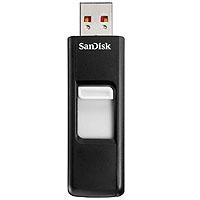 |
| by: Carol Gniady |
For Delgado, the decade brought a host of technological change and growth. Delgado introduced its first website in 1996 followed shortly by electronic mail, which we all now just call “e-mail”. The College’s first webmaster per se was Charles Duffy, who tinkered with web design on the side of his then full -time job of Director of Institutional Research. The first website provided basic information but certainly set our course for tapping into rich resources and serving students via the World Wide Web (www).
E-mail proved to be a blessing and a curse as Mdaemon, the e-mail system used early on was undependable, and the college was networked via coaxial cable, which was faster and better than dial-up.
The ease and speed of e-mails also resulted in new communication etiquette and protocol issues, including anticipated response time. We learned what Spam was and what dangers may lurk in unexpected, innocent seeming attachments that could unleash viruses, worms, and all things technologically vile with the potential to completely shut down operations across the College, and beyond.
Computers also morphed beyond word processing and database storage to become an essential business partner for College employees and students. From desktop to laptop to smartphones and iPads computers have evolved to meet our wildest expectations for convenience and immediacy. For those of us old enough to remember Dick Tracey’s space-aged wristwatch, things that seemed to be pure fantasy are now commonplace.
“Floppy” disks went the way of the dodo bird, with “thumb” drives perhaps soon to follow now that we have the new, ethereal “cloud” storage systems, which require no other hardware than your preferred method of access – computer, cell phone, iPad, etc.
Technology’s expanding breadth also made us more available and “24/7 access” entered our vocabulary and expectations. Once we were tethered to beepers, but now cell phones are ubiquitous. Answering machines? Replaced by voicemail. Leaving a message or reaching someone can now be as easy as sending a text. In fact, text messaging has become the alert system of choice for many institutions, including Delgado, due to its immediacy when rapid response is crucial.
Dr. J. Terence Kelly was Delgado’s Chancellor 1998 to 2003. During his tenure the College embraced the innovations technology brought to business infrastructure and to academics. Under Dr. Kelly, the “Computer Center” changed from a department that focused on data capture and generation to the Office of Information Technology, which revolutionized the way we worked and studied, particularly by integrating web-based functionality and guiding the College’s rapid growth of technology and it many applications.
The new OIT department implemented several important upgrades, facilitating the rapid evolution of the College’s technological environment. Delgado moved from using coaxial cable to high speed fiber optics, to Ethernet, and wireless “Wi-Fi” and each migration increased capacity, broadened the scope of internet and network use to keep up with our growing reliance on technology. By the 1990’s, financial accounting and student information systems were standard operating procedure at Delgado, replacing many hands-on and paper processes while simultaneously improving financial record keeping and sharing, student services such as registration, grades, and records. By the 2000’s, Delgado was light years’ ahead of many of our institutional peers in our recognition of technology’s value and our implementation of innovative IT platforms and services. It became obvious that IT would continue to play a huge role and we marveled at how quickly technology and software became obsolete, requiring ongoing upgrades and a watchful eye on the latest developments, products, and emerging needs.
Technology was also integrated into teaching and learning in the classroom. Most notably, our Nursing program was one of the first in the country to use a Human Patient Simulator to train students how to recognize and treat symptoms and reactions. Our first HPS was named “Kelly,” in honor of Dr. Kelly, who helped secure a $250,000 grant for its acquisition. “Kelly” has the capacity to be configured as either a male or female and provides students with valuable hands-on training in simulated health crisis and care scenarios. HPS have become widely used throughout the country and today Delgado boasts a number of them, including additional adult HPS’s, an infant, child, and even a canine HPS that is now in use for the College’s Veterinary
Tech program.
Tech program.
Simulators also help Delgado’s Workforce Development and Education instructors to train mariners in ship navigation, radar, tow boat operation, crane operation, and emergency response. The maritime ship simulator features an exact replication of the Mississippi River channel for the New Orleans region via computer generated graphics and is also able to simulate every imaginable weather condition, time of day, and ship traffic situation or emergency.
On the nation’s agenda was the 2000 presidential race pitting Al Gore, a Democrat and then sitting Vice President under Bill Clinton, against Texas Republican Governor George Bush. Gore made a campaign stop at Delgado Community College in September, 2000, making his case for “lock box” social security and investment in workforce development.
Once again technology, or in this case the apparent lack thereof, would be a major factor as the tight race came down to Florida’s voting outcomes. Their antiquated system of punch cards and the weeks spent scrutinizing “hanging chads” kept the nation in suspense. The tally was hand-totaled, debated, recounted, and finally, 36 days after election-day, George W. Bush was ratified and elected our 43rd President. Bush served in this capacity from 2001 until 2009, steering the country beyond the 9/11 terrorist attacks in 2001 and into years’ long warfare with Afghanistan and Iraq.
The November 27, 2000 issue of Bloomberg Business answers the question…




















No comments:
Post a Comment